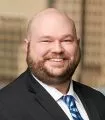In This Issue:
- Q&A with Arnold & Porter PTAB Practitioner Patrick Reidy
- Q&A with Arnold & Porter PTAB Practitioner Michael Sebba
- Advance Notice of Proposed Rulemaking
- Notable Board Decision
Board Grants Discovery of ITC Documents. Apple v. Masimo, IPR2022-01291, Paper 23 (March 17, 2023)
- Recent Director Review Decisions
Erroneous § 325(d) Denial Based on Determination That Substantially the Same Prior Art Was Previously Presented. Wolfspeed, Inc. v. Trustees of Purdue Univ., IPR2022-00761, Paper 13 (March 30, 2023)
Petitioner Could Not Have Foreseen § 325(d) Issue Based on European Counterpart Where Neither Asserted Art Nor European Counterpart Referenced One Another. Google LLC v. Valtrus Innovations Ltd., IPR2022-01197, Paper 12 (March 29, 2023)
- Recent Federal Circuit Decisions related to PTAB
Federal Circuit Precedential Decision: Director's Procedural Instructions Regarding Discretionary Denial of Institution Based on Parallel District Court Litigation, Are Not Committed to Agency Discretion by Law. Apple Inc. v. Vidal, No. 2022-1249 (Fed. Cir. Mar. 13, 2023)
Federal Circuit Precedential Decision: Patentee Has the Burden of Proving that Invalidity Grounds Not Raised in a Petition for Inter Partes Review Could Reasonably Have Been Raised. Ironburg Inventions Ltd. v. Valve Corp., No. 2021-2296 (Fed. Cir. Apr. 3, 2023)
- Events and Speaking Engagements
Upcoming Events and Speaking Engagement
How would you describe your practice?
I represent patent owners and accused infringers in patent litigation, mostly involving computer- and medical device-related technologies, both in district court and before the USPTO.
How long have you been practicing in front of the USPTO and in front of the PTAB?
The first IPR petition I worked on was in 2014 related to three-dimensional mapping technology. Since then, I've represented patent owners and petitioners, including through appeal and remand.
Why were you interested in practicing before the PTAB, and how did you get involved in the practice?
There are a couple reasons I enjoy my PTAB practice. I like being able to make a case to an audience that is technically and legally trained to evaluate the validity of a patent claim based on the pertinent facts and the law, as opposed to a lay district court jury that may be more unpredictable and prone to make its determinations based on other factors outside of our direct control. I also appreciate the efficiency of PTAB practice. The procedural limitations in PTAB practices force attorneys to make their best arguments clearly and early and thus narrow the disputes much sooner than they otherwise would have to.
What do you enjoy about practicing at Arnold & Porter?
I lateraled to Arnold & Porter with a team in 2015 as a second year associate and have had a great experience here. I think there's a degree of luck involved in finding happiness at any law firm, but Arnold & Porter does a good job fostering an environment where a work-life balance can be achieved most of the time. I've also been fortunate to find a team that matches my personal investment in the job and has rewarded my investment with meaningful opportunities for personal and skillset development. As a bonus, I've been able to deploy the skillset I developed on my patent cases on socially significant pro bono matters, and I've been equally impressed by Arnold & Porter lawyers outside of my core team and practice group on those matters.
What do you like to do in your spare time?
I'm a husband and father of three boys under the age of 6, so when I'm not working, I'm doing my best with my wife to figure that out. Otherwise, I like watching good TV shows (Severance and Better Call Saul are recent favorites), exercising (cycling and basketball), and listening to audiobooks (always have a few going at once, fiction and non-fiction, but recently enjoyed “How Will You Measure Your Life?” by Clayton Christensen).
How would you describe your practice?
My practice focuses on district court litigation and PTAB work. I've managed to work for different clients on many different technological areas. I've also had the good fortune to do pro bono work here at Arnold & Porter, Most notably, I worked on a case where 12 plaintiffs won a $14 million jury verdict against the city of Denver for police misconduct during the protests that followed the murder of George Floyd.
How long have you been practicing in front of the USPTO and in front of the PTAB?
My first assignment as a summer associate in 2014 was helping prepare demonstratives for a CBM hearing, so I guess I've been practicing in front of the PTAB since before I was a lawyer. Since then I've worked on IPRs, CBMs, ex parte reexaminations, one inter partes reexamination, and prosecution, although I'm still chasing my first PGR.
Why were you interested in practicing before the PTAB, and how did you get involved in the practice?
Practicing before the PTAB is great because it requires many of the same skills as litigation, but in a setting that is much more limited than a district court litigation. As a result, associates often have the opportunity to take ownership of a much larger share of any given case.
What do you enjoy about practicing at Arnold & Porter?
The best part of working at Arnold & Porter is definitely the team we have here. The partners and counsel don't hesitate to give opportunities to associates, but aren't shy with guidance and mentoring. We're also lucky to have a wide variety of clients in different technological areas, so we're always working on something new and interesting.
What do you like to do in your spare time?
I spend most of my time chasing around my fourand one-year old daughters. I'm in the process of teaching the older one to ride a bike, which is a great time.
Advance Notice of Proposed Rulemaking
On April 20, 2023, the USPTO issued an Advanced Notice of Proposed Rulemaking (“ANPRM”), titled “Changes under Consideration to Discretionary Institution Practices, Petition Wordcount Limits, and Settlement Practices for America Invents Act Trial Proceedings Before the Patent Trial and Appeal Board.” The ANPRM lays out a myriad of proposed modifications to the rules of practice for inter partes review (IPR) and post-grant review (PGR) proceedings and sets a 60-day comment period from the date of publication (April 21, 2023) in the Federal Register. If ultimately adopted, these proposed rule changes could have a significant impact on matters that come before the Board.
The ANPRM's proposals generally fall into three categories: petition word count; pre-institution settlement agreements; and discretionary denial (which accounts for the majority of the proposed changes).
Regarding word count, the USPTO is considering permitting petitioners to pay additional fees (e.g., an additional 50% or 100%) in exchange for a higher word-count limit (e.g., an additional 50% or 100%) for petitions. Under such a policy, responsive filings, such as patent owner preliminary responses, would be allowed a proportional increase in word count limits.
As for pre-institution settlement agreements, while the Board already requires parties to file true copies of settlement agreements post-institution, the USPTO is proposing requiring parties to file settlement agreements even if the proceeding is in the pre-institution stage.
The remaining proposals in the ANPRM relate to discretionary denial and focus on petitions in the following categories:
- Petitions filed by certain for-profit entities
- Petitions challenging under-resourced patent owner patents where the patent owner has or is attempting to bring products to market
- Petitions challenging patent claims previously subject to a final adjudication upholding the patent claims against patentability challenges in district court or in post-grant proceedings before the USPTO
- Serial petitions
- Petitions raising previously addressed prior art or arguments (subject to the 35 U.S.C. 325(d) framework)
- Parallel petitions
- Petitions challenging patents subject to ongoing parallel litigation in district court
Stated policy goals for the proposed rulemaking related to discretionary denial include creating clear, predictable rules. Proposed changes to accomplish these goals include those that would limit the number of filings challenging the same patent. For example, one proposed rule would require petitioners to file stipulations that “neither they nor their privy or real parties have filed prior post-grant proceedings (PGRs, IPRs, CBMs or ex parte reexaminations requested by third parties, not by patent owner) as to any of the challenged claims; and that if their post-grant proceeding is instituted, neither they nor their privy or real parties in interest, will challenge any of the challenged claims in a subsequent post-grant proceeding (including PGRs, IPRs, and ex parte reexaminations requested by third parties, not by patent owner).” Additional proposed rule changes seek to clarify the standards for when discretionary denial would be proper. For example, some proposals include streamlining the Fintiv test by omitting factors 1 and 5, and solidifying that “the compelling merits standard is the most appropriate standard for the Board to apply at the institution stage when determining if the merits of a petition are sufficiently strong to avoid discretionary denial.
Notable Board Decision
Board Grants Discovery of ITC Documents. Apple v. Masimo, IPR2022-01291, Paper 23 (March 17, 2023)
The Board granted the patent owner's motion for additional discovery seeking production of specific documents from a parallel ITC proceeding relating to the challenged patent: unredacted copies of three briefs, thirty-two exhibits, hearing testimony from five witnesses, and the ITC's Final Initial Determination pursuant to 37 C.F.R. § 42.5(b)(2)(i). Patent Owner argued these materials generally pertained to a reasonable expectation of success in modifying the prior art and objective indicia of non-obviousness.
The Board analyzed the factors set forth in Garmin Int'l, Inc. v. Cuozzo Speed Technologies LLC, IPR2021- 00001, Paper 26 (PTAB Mar. 5, 2013) (Decision on Motion for Additional Discovery) (precedential): (1) whether the requests are based on more than a possibility and mere allegation; (2) whether the requests seek litigation positions and underlying basis; (3) whether the requestor has the ability to generate equivalent information by other means; (4) whether the requests are easily understandable; and (5) whether the requests are overly burdensome to answer.
The Board found the requests were based on more than a mere possibility of uncovering something useful, as the documents pertained to the same obviousness theories about the same combination of references. The Board noted that the patent owner attempted to obtain the evidence through a motion filed in the ITC proceeding, and the petitioner argued at the ITC that the patent owner should “pursue any relevant additional discovery through an established mechanism in the PTAB.” Additionally, the Board found unpersuasive the petitioner's argument that the patent owner's requests cover multiple topics, including those unrelated to the patent at issue in the IPR, noting that the petitioner had the opportunity to narrow the scope of production through agreement with the patent owner, but instead chose to produce nothing.
The Board denied the patent owner's request for production of “any exhibits or testimony” cited on certain redacted pages in the public version of two briefs as too speculative at this time, in light of the patent owner's acknowledgement that it did not know whether documents responsive to the request existed. However, the Board left open the possibility that the patent owner may request leave to file a motion for additional discovery if documents are identified in the future.
Recent Director Review Decisions
Erroneous § 325(d) Denial Based on Determination That Substantially the Same Prior Art Was Previously Presented. Wolfspeed, Inc. v. Trustees of Purdue Univ., IPR2022-00761, Paper 13 (March 30, 2023)
On March 30, 2023, the Director sua sponte issued a decision on director review of the Board's Institution Decision in IPR2022-00761. The Director dismissed the petitioner's pending request for Precedential Opinion Panel review of the Board's decision denying institution based on 35 U.S.C. § 325(d) for presenting substantially the same prior art as a previous petition by another petitioner. After finding that the Board erred in determining that the present Petition presented substantially the same prior art as the previous petition, the Director vacated the decision denying institution and remanded to the Board with directions to complete its § 325(d) analysis to determine whether the present Petition presents substantially the same arguments as the prior petition.
In the previous IPR, the Board denied institution of the prior petition based on a lack of motivation to combine two asserted references: a first reference teaching a metal-oxide semiconductor field-effect transistor (“MOSFET”), and a second reference teaching a particular transistor topology. The Board found that the petitioner's stated motivation to combine was directly contradicted by clear disclosure in the second reference, which “expressly states that the use of the Figure 19E transistor topology results in a ‘less rugged' transistor”. The present Petition used the same first reference as the prior petition to teach a MOSFET, but used two different references for the disclosure related to transistor topology.
Addressing the first part of the Advanced Bionics framework, the Director determined that the Board's finding that the two newly asserted transistor topology references were substantially the same as the previously asserted reference, and thus its discretionary denial of institution under § 325(d), was in error. Specifically, the Director determined that the newly asserted transistor topology references were materially different from the previously asserted reference in that they lacked the specific disclosure that the Board found to be fatal to motivation to combine in the first IPR. Additionally, the Director noted that the present petition addressed the contradictory statement in the previously asserted reference.
Having determined that the present petition did not rely on substantially the same art as the prior petition, the Director remanded for the Board to determine whether the present petition nonetheless presented substantially the same arguments as the prior petition.
Petitioner Could Not Have Foreseen § 325(d) Issue Based on European Counterpart Where Neither Asserted Art Nor European Counterpart Referenced One Another. Google LLC v. Valtrus Innovations Ltd., IPR2022-01197, Paper 12 (March 29, 2023)
The Director sua sponte vacated a portion of the Board's decision discretionarily denying institution based on 35 U.S.C. § 325(d) and granted the petitioner's request for reply, where the Director determined that the petitioner could not have reasonably foreseen the issue while drafting its petition.
The petition relied on a prior art reference whose European counterpart was cited on an IDS signed by the examiner during prosecution. The patent owner's Preliminary Response argued for § 325(d) discretionary denial based on this citation to the European counterpart during prosecution, and the petitioner requested leave to file a reply to address the issue. The Board determined that the petitioner failed to show good cause for granting leave to file a preliminary reply and issued an order denying institution.
The Director vacated the Board's § 325(d) denial, finding that the petitioner could not have reasonably foreseen the patent owner's § 325(d) argument because the asserted prior art reference and its European counterpart did not cite to one another, and the asserted reference itself was not cited during prosecution. Accordingly, the Director ordered the petitioner file its requested reply addressing § 325(d), that the patent owner file a sur-reply, and that the Board address § 325(d) based on all pre institution papers.
Recent Federal Circuit Decisions related to PTAB
Federal Circuit Precedential Decision: Director's Procedural Instructions Regarding Discretionary Denial of Institution Based on Parallel District Court Litigation , Are Not Committed to Agency Discretion by Law. Apple Inc. v. Vidal, No. 2022-1249 (Fed. Cir. Mar. 13, 2023)
Apple Inc. and three other companies filed suit in the Northern District of California, seeking to challenge the Director's instructions on discretionary denial of institution based on parallel district court litigation (including the “Fintiv instructions” outlined in the Memorandum from PTO Director to PTAB, Interim Procedure for Discretionary Denials in AIA Post-Grant Proceedings with Parallel District Court Litigation (June 21, 2022)) on three grounds under the Administrative Procedure Act (“APA”): (1) that the Director acted contrary to the IPR provisions of the patent statute, see 5 U.S.C. § 706(2)(C); (2) that the Fintiv instructions are arbitrary and capricious, see 5 U.S.C. § 706(2)(A); and (3) that the Fintiv instructions were issued without compliance with the notice-and-comment rulemaking requirements of 5 U.S.C. § 553, as assertedly required by that APA provision and by 35 U.S.C. § 316. The government moved to dismiss the case, arguing that the plaintiffs lacked standing and, in the alternative, that an APA review was unavailable both because (1) “statutes preclude judicial review” of the matters presented and (2) the challenges are to “agency action [that] is committed to agency discretion by law,” 5 U.S.C. § 701(a)(1)–(2). The district court dismissed the case, holding that such decisions were unreviewable under 35 U.S.C. § 314(d) because the court “would have to analyze questions that are closely tied to the application and interpretation of statutes” governing institution decisions
The Federal Circuit affirmed the § 701(a)(1) dismissal that the Director acted contrary to the IPR provisions of the patent statute and the Fintiv instructions are arbitrary and capricious, and determined that it need not consider § 701(a)(2) or standing.
Regarding the challenge concerning the absence of notice-and-comment rulemaking, the Court held that neither § 701(a)(1) nor § 701(a)(2) bars review of that challenge noting that “[t]he rulemaking provision of the APA, 5 U.S.C. 553, may itself provide ‘law to apply' for reviewing agency procedures, even if there is otherwise no jurisdiction to review the substance of the agency decision.” The Court determined that because Apple is “non-speculatively threatened with harm to a legally protected interest from the challenged instructions” it had standing to press the claim that the challenged instructions were improperly put in place without notice-andcomment rulemaking and remanded to the district court for consideration of the notice-and-comment rule making challenge on the merits.
Federal Circuit Precedential Decision: Patentee Has the Burden of Proving that Invalidity Grounds Not Raised in a Petition for Inter Partes Review Could Reasonably Have Been Raised. Ironburg Inventions Ltd. v. Valve Corp., No. 2021-2296 (Fed. Cir. Apr. 3, 2023)
The Federal Circuit vacated and remanded the district court's finding that an IPR petitioner was estopped from litigating later-discovered invalidity grounds that were not included in the IPR petition. The petitioner sought to raise grounds in the district court that were based on references on the face of the patent at issue and that were raised in a previous IPR. The Court found that the district court improperly placed the burden of proof on the petitioner to show that it could not reasonably have raised the “Non-Petitioned Grounds” in its petition.
The petitioner failed to offer evidence “concerning the degree of difficulty involved in locating the prior art references at issue.” The district court held that an IPR petition “reasonably could have raised any grounds that a skilled searcher conducting a diligent search reasonably could have been expected to discover,” but implicit in their holding was the “view that the burden of proof rests on [the petitioner], as the party challenging the patent's validity.” However, the Federal Circuit agreed with the petitioner's position that the burden of proof should be placed with the patent owner, as the patent owner is the party seeking to benefit from the assertion of estoppel. Further, the Federal Circuit found this holding to be consistent with “the general practice that a party asserting an affirmative defense bears the burden to prove it.”
Ultimately, the Federal Circuit held the burden is on the patent owner to “prove, by a preponderance of the evidence, that a skilled searcher conducting a diligent search reasonably would have been expected to discover the invalidity grounds at issue.”
Events and Speaking Engagements
Upcoming Events and Speaking Engagements
Upcoming webinar information session with the Under Secretary of Commerce for Intellectual Property and Director of the USPTO Kathi Vidal about the recently published Advance Notice of Proposed Rulemaking (ANPRM)
- The Information Session will be about the recently published ANPRM seeking public input on proposed changes to discretionary institution practices, petition word limits, and settlement practices for AIA proceedings before the PTAB.
- The Information Session will be held on May 9, 2023, from noon to 1 p.m. ET.
- The Information Session is free and open to all.
More details and information can be found here.
Upcoming 21st Annual Rocky Mountain Intellectual Property & Technology Law Institute
The Annual Rocky Mountain Intellectual Property & Technology Law Institute brings together prominent government officials and private practitioners to discuss hot topics across the various aspects of IP law. The conference starts with a day dedicated to IP fundamentals on May 31, and then proceeds to the two-day IP Institute on June 1-2. In the IP Institute, participants can choose among sessions in four tracks: Patents/Patent Litigation, Trademarks/Copyrights, Tech Transactions and Licensing, and In House.
For the Trademarks/Copyrights track, Arnold & Porter partner Evan Rothstein will be presenting on a panel on Copyright Updates, addressing recent developments in copyright law over the last year. This panel discussion will be on June 1 at 2:40-3:30 p.m. MDT.
For the Patents/Patent Litigation track, Arnold & Porter partner Jessica Kaiser will be presenting on a panel on “A Litigator's View of Claim Drafting.” The panel discussion will focus on correlating claim breadth to damages, ensuring enablement, and the post-Alice need for computational granularity and will be on June 2 at 11:10 a.m.-12:00 p.m. MDT.
This conference will take place in Westminster, Colo. and via webcast. More details and registration information can be found here.
Upcoming Federal Circuit Bar Association Bench and Bar Conference
The Federal Circuit Bar Association's Bench and Bar Conference is celebrating its 25th anniversary this summer. This conference brings together judges on the Court of Appeals for the Federal Circuit with adjudicators whose decisions are appealed to the Federal Circuit, government policy makers, and top private practitioners to discuss important issues confronting the Federal Circuit community.
Arnold and Porter is an FCBA Leaders Circle Sponsor. During the Bench and Bar Conference, Arnold & Porter partner Abigail Struthers will be presenting on a panel on June 30, titled “Claim Construction — Do We Need Phillips 2.0?” The next day (July 1), Arnold & Porter partner Jessica Kaiser will be moderating the PTAB panel.
The June 28-July 1 conference is at the Broadmoor in Colorado Springs. More details and registration information can be found here.
The content of this article is intended to provide a general guide to the subject matter. Specialist advice should be sought about your specific circumstances.










